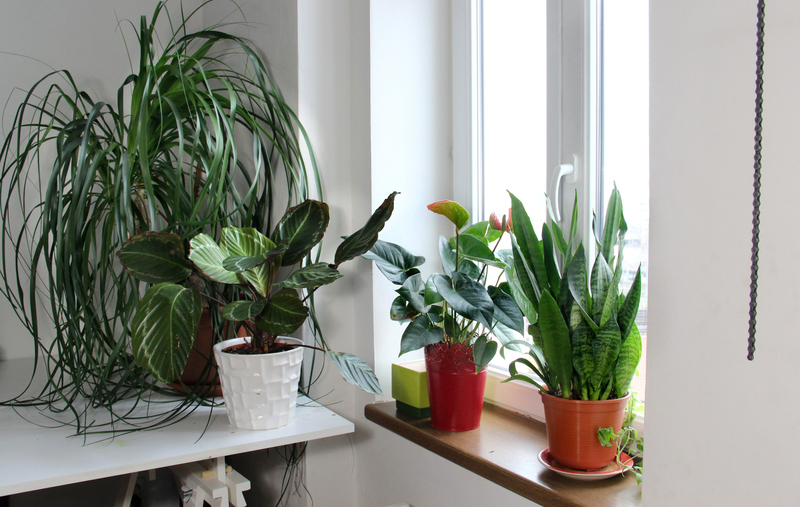Unveil 9 Ground Covers Ideal for UK Gardens
Posted on 15/05/2025

Unveil 9 Ground Covers Ideal for UK Gardens
The lush landscapes of the UK are a gardener's dream, largely due to the country's suitable climate for a rich variety of plants. While many might often focus on vibrant perennials and towering trees, ground covers play a crucial role in providing texture, color, and weed suppression. Below, we unveil nine ground covers that are ideal for UK gardens, which not only enhance beauty but also contribute to ecological balance.
The Importance of Ground Covers in UK Gardens
Before diving into the specifics, it's essential to understand why ground covers hold such significance in gardening. These living carpets can:
- Prevent soil erosion: By stabilizing the soil, ground covers help in reducing erosion, particularly on slopes.
- Reduce weeds: They crowd out weeds by taking up space and sunlight, acting as a natural suppressor.
- Enhance moisture retention: Their dense growth inhibits water evaporation from the soil.
- Attract wildlife: Many species of ground covers offer habitat or food for insects, birds, and other wildlife.
- Assess Your Space: Understand whether your area is sunlit or shaded; some ground covers thrive under trees, while others prefer sunlight.
- Soil Conditions: Preparing the soil by ensuring proper drainage or adding compost can enhance the success of ground covers.
- Plant Density: Space plants according to their mature spread to avoid overcrowding or bare patches.
- Maintenance: While ground covers are generally low-maintenance, some may require occasional trimming or edging to keep them in check.
Top 9 Ground Covers for UK Gardens
1. Thyme (Thymus serpyllum)
Thyme is more than just a culinary herb; it's a fantastic ground cover. Known for its fragrance and tiny pink or purple flowers, thyme thrives in sunny spots with well-drained soil. Its dense mat formation makes it perfect for pathways or between stepping stones.
2. Bugleweed (Ajuga reptans)
Bugleweed or Ajuga reptans is a robust, shade-loving ground cover. It sports beautiful blue flower spikes in spring. Ideal for moist and shaded areas, bugleweed spreads moderately fast, making it great for under-planting in woodland gardens.
3. Periwinkle (Vinca minor)
If you need an evergreen option, Periwinkle (also known as Vinca) is perfect. It's adaptable and tolerates both shade and sun, making it versatile for various garden conditions. The lavender-blue flowers are a delightful sight in spring.
4. Lady's Mantle (Alchemilla mollis)
This hardy perennial is cherished for its rounded leaves and frothy lime-green flowers. Lady's Mantle thrives in partial shade and can handle poor soil conditions, offering a soft, lush appearance with little effort.
5. Japanese Spurge (Pachysandra terminalis)
Perfect for shady areas, Japanese Spurge spreads quickly under trees or in shaded borders. It maintains a glossy green look year-round and provides delicate white flowers in early spring. Pachysandra is ideal for those hard-to-grow areas in the garden.
6. Wild Strawberry (Fragaria vesca)
Beyond being a charming ground cover, Wild Strawberry offers the added bonus of delicious fruit. It's a low-growing plant with trifoliate leaves and produces small, sweet berries perfect for snacking. It's well-suited for a sunny to partly shaded spot in the garden.
7. Creeping Jenny (Lysimachia nummularia)
Creeping Jenny, also known as Moneywort, is a vibrant ground cover with a sprawling nature. Its bright yellow foliage brings light to shaded areas and performs well by water features or as edging.
8. Bearberry (Arctostaphylos uva-ursi)
This evergreen shrub is known for its trailing stems and small, glossy leaves. Bearberry produces lovely pinkish-white flowers in the spring, followed by bright red berries. It prefers acidic soils and sunny locations, making it well-suited for rock gardens or similar settings.
9. Sedum (Sedum acre)
Ideal for dry and sunny areas, Sedum or stonecrop is a low-growing succulent with fleshy leaves and yellow star-shaped flowers. It's drought-tolerant and works well in rock gardens, on green roofs, and as a spillover plant for containers.
Implementing Ground Covers: Best Practices
Gardeners seeking to capitalize on the benefits of ground covers should consider the following tips:
Conclusion: Enhancing Your UK Garden Naturally
Choosing the right ground cover involves aligning plant characteristics with your garden's conditions. Whether aiming for vibrant color, texture diversification, or ecological benefits, the ideal ground covers can transform your garden into a thriving ecosystem. By incorporating a mix of the species mentioned above, UK gardeners can achieve a lush and sustainable landscape that captivates throughout the seasons.


